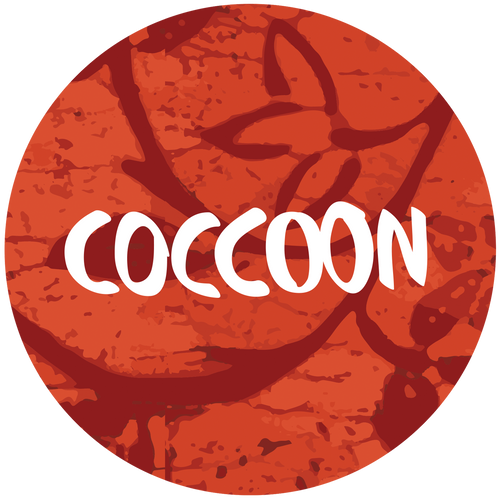What's the difference between a deodorant and an antiperspirant? What's the best choice?
Before formulating and producing our natural multifunctional deodorant, we personally tested so many variants, and we gathered so much valuable information that allowed us to offer a simple and clear guide to better understand the world (still a bit confused) of deodorants.
It's a common problem to keep bad body smells at bay, but at the same time it's important to avoid toxic and dangerous ingredients for our body.
It's hard to be 100 % natural and ecological in all our daily choices, and it's perfect if we make some efforts to preserve our health as well as the planet's.
The skin in mammals and especially in human beings is the most extensive organ. It absorbs everything we spread on its surface. Just like skin food!
It is therefore essential to know what we apply everyday on our body. Even the deodorant we always use, often repeatedly during the same day, is a product that shouldn't keep secrets. For example, the anti-odor effect hides an important problem not very well-known.
A few premises:
WHAT CAUSES THE BAD SMELL UNDER THE ARMPITS?
Our body sweats when we exercise and even when we're nervous or stressed. We sweat to cool off the heat. But sweat doesn't cause bad smells. It's instead the interaction of our sweat with bacteria on our skin that has this smelling effect! Probably ′′gut bacterial flora′′ or gut microbiome is best known, but did you know we also have one microbiome on our skin? A sort of ecosystem that is important for us.
Under the armpits, bacteria metabolize sweat. The byproducts of this metabolism, also called thioalcohols, are the cause of bad smells. And so, using deodorant, we all daily fight against this smelly problem.
WHAT CHANGES BETWEEN ANTIPERSPIRANT AND DEODORANT PRODUCTS?
The antiperspirants work blocking sweat that can't then be released from our body. Aluminum salts, for example, work precisely to plug the skin pores under the armpits so that sweat doesn't come out. Without sweat, bacteria has nothing to metabolize and therefore the problem of bad smells is solved in this radical way.
Deodorants that don't contain aluminum let us sweat. They are instead designed to kill bacteria that cause bad smells. They often also contain perfumes that help hide any unpleasant smells. Plus deodorants can contain sweat-absorbing and pH controlling ingredients under the armpits. Finally traditional deodorants - non-natural - contain synthetic fragrances and other chemical components that can attack the skin and be harmful to our health (e.g. aluminum, phthalates, triclosan, propylene glycol... Read more in the list at the bottom).
It is therefore always the right time to start using a natural deodorant with a delicate yet effective formulation.
HOW DOES A TRADITIONAL NATURAL DEODORANT WORK?
Instead of plugging skin pores, a natural deodorant works by killing bacteria under the armpits. There are many ingredients that perform this function, such as sodium bicarbonate and coconut oil.
HOW DOES OUR NATURAL DEODORANT WORK?
The solid Coccoon deodorant is the first natural solution formulated in Italy to neutralize bad smells of the body thanks to innovative technology based on the enzyme activity of yeast-derived proteins that can metabolize malodorant substances.
Basically it doesn't block pores like an antiperspirant, and it doesn't even kill sweat-metabolizing bacteria. Through a biological process, our innovative deodorant activates the degradation of the malodorant substances produced by the bacteria of our microbiome that remains intact. It therefore does not contain aluminum salts, bicarbonate or other synthetic chemical agents.
All of this technology is concentrated in a 58 g solid bar whose formulation is rich in coconut oil (15 %), bisabolol - a chamomile-derived soothing component -, and Aloe vera. The absence of perfumes makes it a universal product, certified for sensitive skin, safe and effective, ideal for deodorization of armpits, feet and intimate parts, even for babies. Actually, it's also the first innovative natural deodorant to be multifunctional!
[If you think Cocoon deodorant can also be part of your daily routine, you can buy it here].
THE LIST OF DANGEROUS INGREDIENTS IN CONVENTIONAL DEODORANTS AND ANTIPERSPIRANTS
- Aluminum - Aluminum salts are active antiperspirant ingredients. They are found in INCI products such as aluminum chloride, aluminum chlorohydrate or aluminum zirconium chlorohydrate;
- Phthalates - They are used to increase plastic flexibility and transparency. In cosmetic products they increase their absorption and improve skin adhesion, while keeping perfumes for longer;
- Triclosan - It's a preservative with antimicrobial function. It can be found in cosmetic products, soaps, gelbaths, toothpastes, deodorants, antiperspirants and dish cleaners. It kills bacteria by contact;
- Parabens - They are a category of preservatives used to prevent bacterial proliferation and extend the preservation time of deodorants, creams and other beauty products. They are found in INCIs such as: methylparaben, ethylparaben, propylparaben, isobutylparaben and butylparaben... The European Union banned the use of parabens in cosmetics in 2012;
- Propylene glycol - It's a petroleum derivative ingredient that gives a slippery consistency to deodorants;
- Synthetic fragrances - In cosmetic products you can indicate the presence of one fragrance as if it were a single ingredient, even though it can often be hundreds of different ingredients. A synthetic fragrance could contain many irritating components, even phthalates, for example.

Back to News